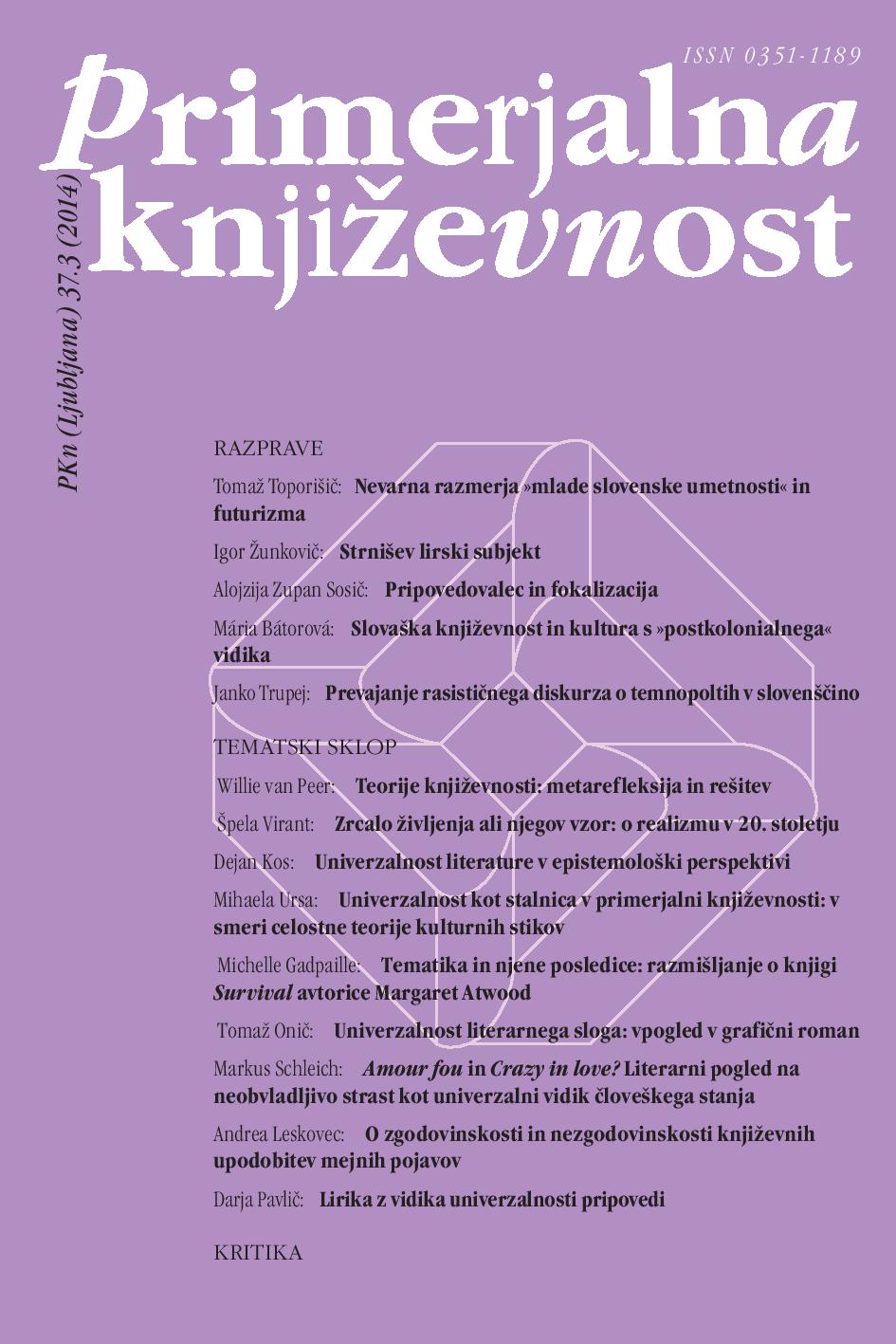A Mirror of Life or Its Model: Twentieth-Century Realism
Keywords:
literary periods, realism, new realism, functions of literature, ahistoricity, universality, Lukács, GyörgyAbstract
The issue of universality in literature is relevant when addressing the compatibility of literary studies methods and trends in developing new methodological tools at the moment when, at the one extreme, the ahistorical conception of literature is being justified with allegedly universal biological facts, and at the other extreme historical research merely dissolves into listing of facts without reflection. The hypothesis of universality can be used as a tool that leads to an in-depth historical view on specific literary phenomena. To illustrate this, the author discusses instances of twentieth-century realism that appeared after the First and Second World War and after the Cold War. This tool, however, represents a hypothesis about the universality of functions that writers and recipients ascribe to literature in its relation to non-literary reality. – There were three parallel models of the relationship between literary and non-literary reality during the twentieth century, which, despite being resolved in theory, have continued to interconnect in reception practice. They can be schematically described as a mimetic and anti-mimetic model, and a model of engaged literature. Taking into account the temporal dimension, it can be established that they are based on two conceptions of the temporal relationship between literature and the world: the first, on which the models of mimetic and anti-mimetic art are based, proceeds from the assumption that non-literary reality exists before literary reality. The latter refers to the former, but it cannot change it. It can mirror or predict it, but can never change it. The second conception, on which the model of engaged literature is based, allows for literary reality to exist before non-literary reality and to influence or even produce it. The oldest examples of texts that are based on this premise are incantations, examples of which can be found across all periods. The analysis of new realistic writings shows that they do not find satisfaction in merely mirroring the world, but also want to shape it; hence, they assume the function of providing a consensual image of reality, which in periods after a war offers society and individuals a foundation for reconstructing social reality. Taking this function into account in similar, but different, historical circumstances can explain the formal differences and diversity of these types of realism.References
Barthes, Roland. »Smrt avtorja«. Sodobna literarna teorija. Ur. Aleš Pogačnik. Ljubljana: Krtina, 1995. (Temeljna dela).
Böll, Heinrich. Frankfurter Vorlesungen. München: dtv, 1968.
Borchert, Wolfgang. Das Gesamtwerk. Reinbek bei Hamburg: Rowohlt, 1991.
Eich, Günter. Fabula rasa. Stuttgart: Reclam, 1991.
Didi-Huberman, Georges. Podobnost prek stika. Ljubljana: Studia humanitatis, 2013.
Freud, Sigmund. Vorlesungen zur Einführung in die Psychoanalyse. Frankfurt ob Majni: Fischer, 1997.
Hogan, Patrick Colm. Cognitive Science, Literature, and the Arts. New York; London: Routledge, 2003.
− − −. The Mind and Its Stories. Cambridge: Cambridge University Press, 2009.
Lethen, Helmut. Neue Sachlichkeit. 1924–1932. Stuttgart: J. B. Metzler, 1975.
Lukács, Georg. Probleme des Realismus. Berlin: Aufbau Verlag, 1955.
− − −. »Za realizem gre.« Estetika in politika. Ljubljana: Studia humanitatis, 2013. 31–72.
Sacks, Oliver. Drachen, Doppelgänger und Dämonen. Reinbek bei Hamburg: Rowohlt Verlag, 2013.
Sebald, W. G. Luftkrieg und Literatur. München; Dunaj: Carl Hanser Verlag, 1999.
Wilde, Oscar. A Critical Edition of the Major Works. Oxford: Oxford University Press, 1989.


